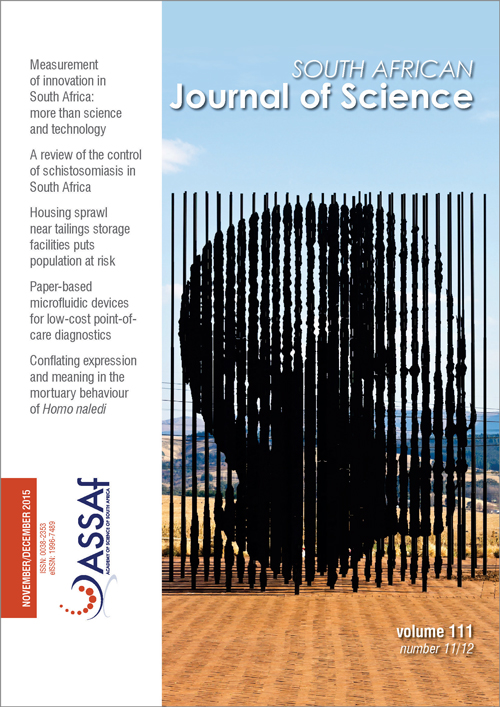Assessing the effects of climate change on distributions of Cape Floristic Region amphibians
DOI:
https://doi.org/10.17159/sajs.2015/20140389Keywords:
amphibian community, species range shifts, Cape Floristic Region, species distribution models, biotic velocityAbstract
Climatic changes have had profound impacts on species distributions throughout time. In response, species have shifted ranges, adapted genetically and behaviourally or become extinct. Using species distribution models, we examined how changes in suitable climatic space could affect the distributions of 37 endemic frog species in the Cape Floristic Region (CFR) – an area proposed to have evolved its megadiversity under a stable climate, which is expected to change substantially in future. Species distributions were projected onto mean climate for a current period (1950 to 2000), hindcasted to palaeoclimate (Last Glacial Maximum; LGM ≈ 21 kya and Holocene Glacial Minimum; HGM ≈ 6 kya) and forecasted for two emissions scenarios (A2a and B2a) for the year 2080. We then determined the changes in area sizes, direction (longitude and latitude), fragmentation index and biotic velocity, and assessed if these were affected by life-history traits and altitude. We found that the biotic velocity at which the CFR amphibian community is expected to shift north (A2a ≈ 540.5 km/kya) and east (B2a ≈ 198 km/kya) far exceeds historical background rates (≈1.05 km/kya, north and west ≈ 2.36 km/kya since the LGM). Our models further suggest that the CFR amphibian community has already lost about 56% of suitable climate space since the LGM and this loss is expected to accelerate under future emission scenarios (A2a ≈ 70%; B2a ≈ 60%). Lastly, we found that highland species were more fragmented than lowland species between the LGM and current period, but that the fragmentation of lowland species between current and future climates is expected to increase.
Downloads
Published
Issue
Section
License

All articles are published under a Creative Commons Attribution 4.0 International Licence
Copyright is retained by the authors. Readers are welcome to reproduce, share and adapt the content without permission provided the source is attributed.
Disclaimer: The publisher and editors accept no responsibility for statements made by the authors
How to Cite
- Abstract 918
- PDF 888
- EPUB 222
- XML 441
- Supplementary Material 176












.png)